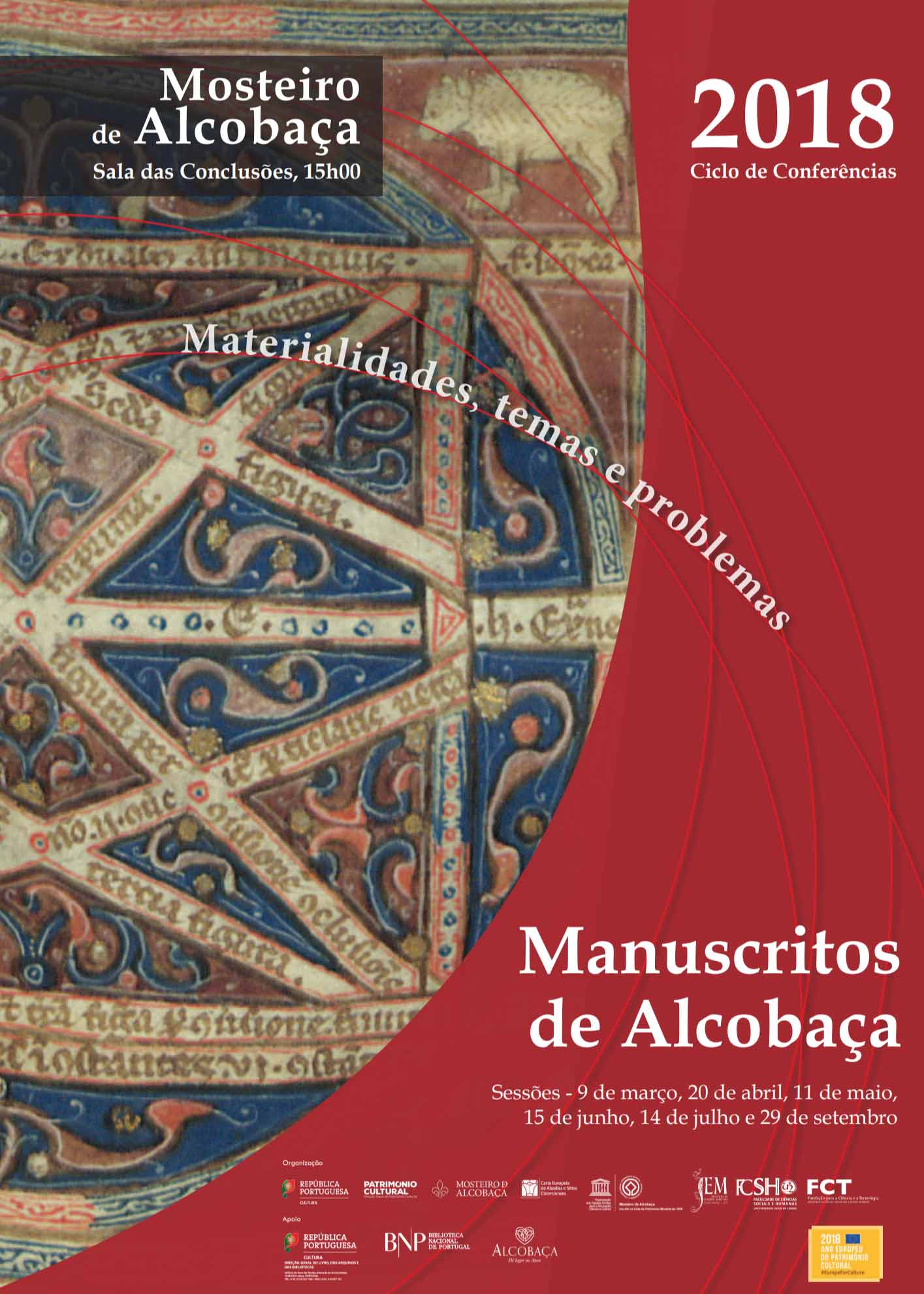Conference Cycle Manuscritos de Alcobaça II – materialidades, temas e problemas | 3rd Session
11.05.2018 | 15:00
Sala das Conclusões, Mosteiro de Alcobaça

The third session of the cycle “Manuscritos de Alcobaça II” will take place on May 11, and will feature lectures by Conceição Casanova (FCT and REQUIMTE NOVA) and by Paulo Catarino Lopes and Catarina Fernandes Barreira, both researchers from the Institute of Medieval Studies of the School of Social Sciences and Humanities of the NOVA University (IEM-NOVA FCSH).
1st Conference:
“Registo da materialidade do códice Alcobacense como método para a sua preservação futura”, by Conceição Casanova (FCT e REQUIMTE NOVA)
The study of the medieval book and its binding, as a three-dimensional object, has involved very different academic profiles and scholars, from historians, codicologists, librarians/archivists, conservators-restorers, among others. These different specialists not only have different approaches but also use different methodologies and terminology, which hinders the sharing and circulation of information and the construction of a cross-cutting corpus of knowledge that allows us to carry out reliable provenance and dating studies. This is especially relevant, where objects that have survived to this day, unchanged, are rare. On the other hand, studies have focused essentially on the appearance of the object and its decorative richness, with few descriptions of the structure such as the stitching technique, the filling, and the covering that constitute the identifying elements of a way of doing, proper of a workshop and craftsman. The set of codices from Alcobaça is, therefore, an unparalleled source of knowledge, due to the number of objects that have survived without significant changes. However, it is of interest to carry out a comparative study to define specificities and understand levels of influence, within the framework of medieval European book production. To this end, it is essential to create a standardized recording method that allows the characterization of the different typologies, through an exhaustive material and technical description, using common terminology. This tool is also fundamental as a means of future safeguarding, characterizing the identity elements of these three-dimensional objects and allowing the sharing of knowledge.
2nd Conference:
“Sejaes fortes a fazer bem e em ello perseverar: o Mosteiro de Alcobaça ao tempo do abade D. Estevão de Aguiar”, by Paulo Catarino Lopes (IEM-NOVA FCSH) and Catarina Fernandes Barreira (IEM-NOVA FCSH)
The presentation focuses on the abbacy of D. Estevão de Aguiar (1431-1446), a reforming abbot whose appointment was not peaceful, and who introduced a series of changes in the Alcobaça Monastery. We intend to discuss the changes in the scriptorium of the Alcobaça Monastery – which texts are copied – but also to analyze some changes that he introduces in the Liturgy practiced in the Monastery. In this sense, we will contextualize, from the historical point of view, the path of D. Estevão de Aguiar between Italy and Portugal, emphasizing, namely, the relationship with D. Gomes Eanes, the famous Abbot of Florence, and the main figures of the Avis dynasty, who at the time strongly supported the introduction of reformist measures at the religious level in the kingdom of Portugal.
